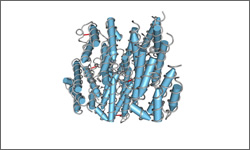Alpha-interferon

Alpha-interferon is usually given in a two-step process. During the first step (induction), the drug is given in a vein (intravenously). In the second step, the drug is given by injections under the skin, usually in the abdomen or thigh. Alpha-interferon is used to treat kidney (renal) tumors, melanoma, multiple myeloma, carcinoid tumors and some types of lymphoma and leukemia.1 2 Alpha-interferon is also used to treat hepatitis infections (Rebetron®, Rebetol®). A new version of alpha-interferon (Sylatron®) was approved in 2011 for the treatment of melanoma. This new form allows the drug to last for a longer period of time in the body.3
- 1"Interferon." MacMillan Cancer Support. (Accessed 10/5/2010). [http://www.macmillan.org.uk/Cancerinformation/Cancertreatment/Treatmenttypes/Biologicaltherapies/Interferon.aspx]
- 2Ravaud A, Dilhuydy MS. Interferon alpha for the treatment of advanced renal cancer. Expert Opin Biol Ther. 2005 Jun;5(6):749-62. [PUBMED]
- 3Herndon T, Demko S, Pazdur R. U.S. Food and Drug Administration Approval: Pegintergeron-alfa-2b for the adjuvant treatment of patients with melanoma. Oncologist. 2012 Oct;17(10):1323-1328. [PUBMED]
Alpha-interferon is a naturally occurring protein that is found in the body in small amounts. Use of Alpha-interferon treatments lead to inhibition of tumor cell protein production, which also helps by prolonging the cell cycle and modulating oncogene expression. Despite this, the exact mechanism of anti tumor action remains unknown.1
The above diagram shows the 3D conformer of parent compound Prochloraz.
- 1Chu, E., & DeVita, V. T. (2015). Physicians' cancer chemotherapy drug manual 2015. Burlington, MA: Jones & Bartlett Learning.
Side effects of Alpha-interferon can often be somewhat severe, as flu-like symptoms (fever, chills, body weakness) occur in 80-90% of patients. However, these issues typically occur only right after a treatment and decrease with subsequent treatments. Other side effects can include: fatigue, confusion, depression (especially in the elderly) and skin issues.1
- 1Chu, E., & DeVita, V. T. (2015). Physicians' cancer chemotherapy drug manual 2015. Burlington, MA: Jones & Bartlett Learning.
Interferon can worsen existing heart, kidney, liver, and mental health problems.
